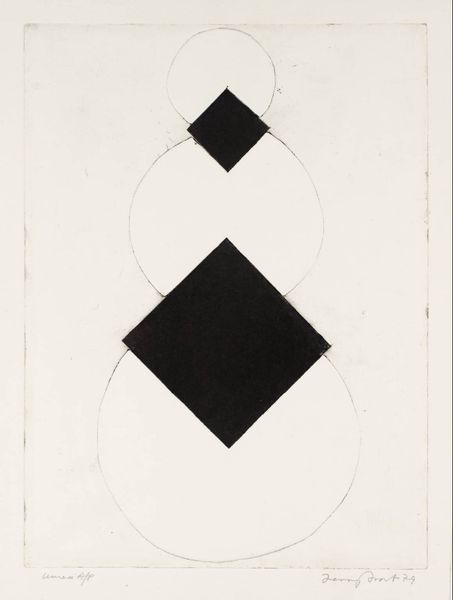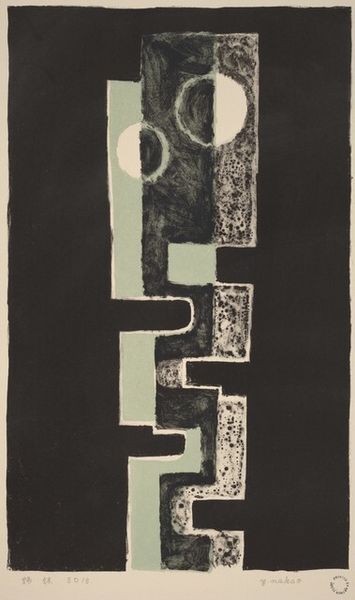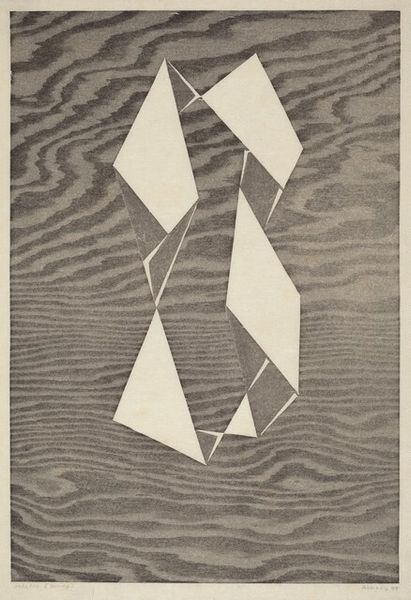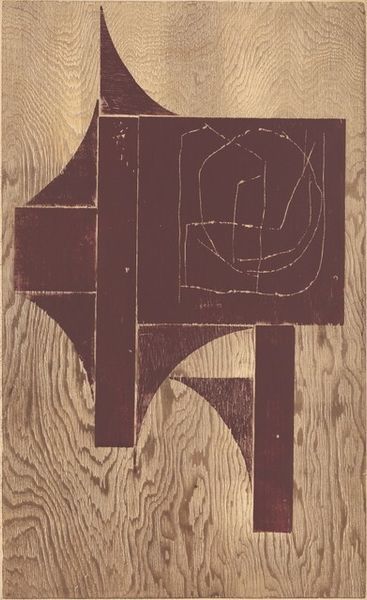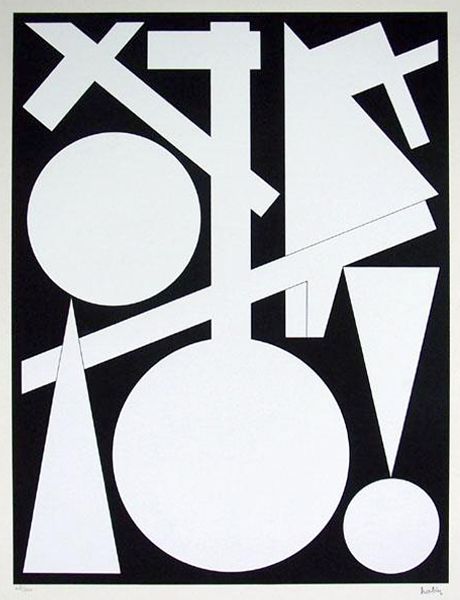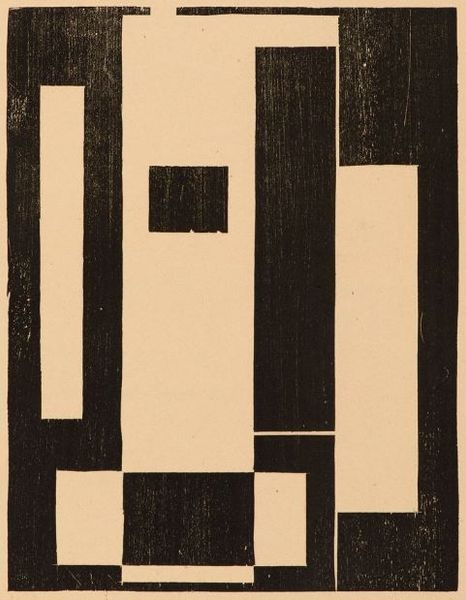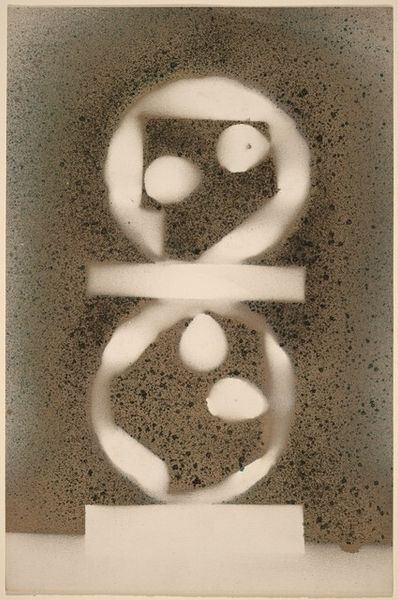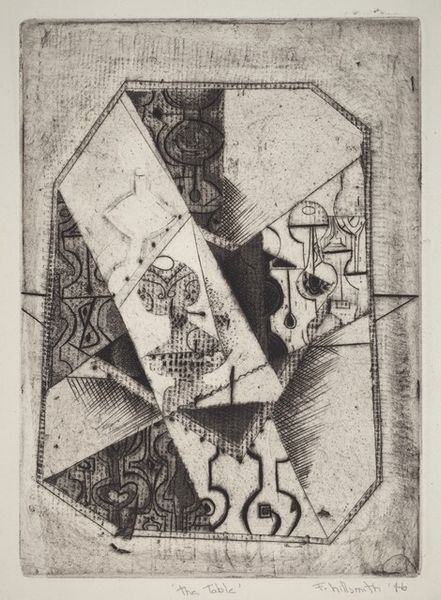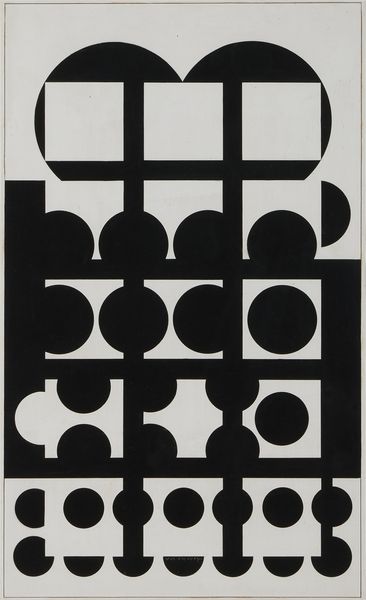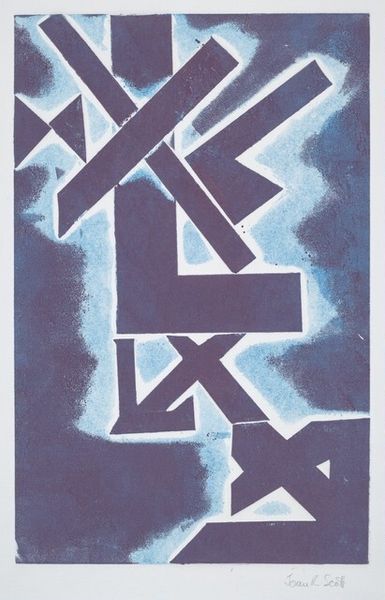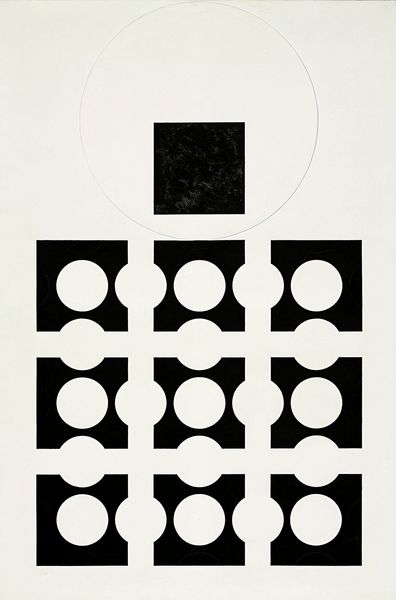
graphic-art, print
#
abstract-expressionism
#
graphic-art
#
negative space
# print
#
geometric
#
abstraction
#
modernism
#
monochrome
Copyright: Leo Leuppi,Fair Use
Curator: Immediately striking, isn’t it? Leo Leuppi’s 1943 print, simply titled “Series,” presents a compelling arrangement of geometric forms. Editor: There’s a starkness to it, certainly. The high contrast monochrome palette and the rigid geometry give it an almost oppressive feel, like symbols from a forgotten language. Curator: That sensation, I suspect, stems from the era in which it was created. Wartime conditions, naturally, impact the availability of materials and art's means of production. The reduction to monochrome in prints often points to these material restrictions and choices rooted in that context. It begs the question – how might this artist's work be altered if such constraints weren't at play? Editor: That's an important aspect to consider. I'm also thinking about the socio-political impact it has in relation to its time. It was produced amidst immense global conflict. Is there an implicit commentary on order and chaos reflected through those rigid shapes, or a reaching for meaning when meaning was elusive during the war? I also wonder how viewers at that time read its symbolic language of monochrome geometric forms against the visual culture of wartime propaganda and anxieties. Curator: Exactly! The print itself is a study in contrasts - bold geometric shapes are juxtaposed with swirling lines that break their severity. To me, those looping figures made using the negative space, suggest some element of playfulness. It suggests not merely restrictions to material options for printmakers. Its form has clearly become an invitation of design, opening more considerations to how prints can expand. Editor: Perhaps so, or perhaps the playfulness is an anxious kind. It feels almost like an optical illusion. The shapes seem to shift and reconfigure themselves as you look at them. It makes you question how reliable forms, whether graphic or political, were in such periods of great uncertainty. How it interacts with the eye definitely seems intentional. I would want to study the gallery records for notes on its opening reception or related publications that document those cultural reactions in greater depth. Curator: Yes, how its reception evolves across decades really completes its life. Thanks for taking time to delve with me into this work of abstract expressionism and its historical considerations. Editor: The pleasure was mine! Looking forward to further explorations of materiality and historical context.
Comments
No comments
Be the first to comment and join the conversation on the ultimate creative platform.
